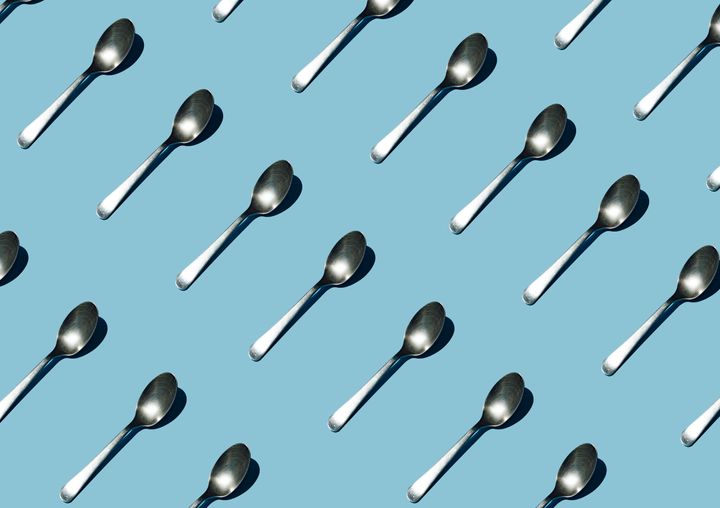
Forget the crimes in Sherlock Holmes. Agatha Christie? Child’s play.
The real enigma, anyone with a kitchen knows, is where all the damn teaspoons went.
Recently, TikToker Dexter.mp4 shared a study that confirmed what we could have all guessed; even the best scientific minds struggle to work out where the cagey cutlery go.
“One of the biggest problems affecting research institutes, apparently, is the loss and ensuing lack of teaspoons,” he began his video. So, in 2004, researchers at the Burnett Institute in Melbourne sought to study the problem.
Thus, in 2005, ”The Case of the Disappearing Teaspoons: Longitudinal Cohort Study of the Displacement of Teaspoons in an Australian Research Institute” was published.
The objective? “To determine the overall rate of loss of workplace teaspoons and whether attrition and displacement are correlated with the relative value of the teaspoons or type of tearoom,” the published paper reads.
Here’s how they tested, and what they found out:
Let’s talk methodology
You’d expect a double-blind randomised trial in such pivotal studies, but researchers reckoned that painting numbers on teaspoons would be enough. I blame underfunding.
“70 discreetly numbered teaspoons [were] placed in tearooms around the institute and observed weekly over five months,” the study revealed. No control group, such as a wooden stirrer-only kitchen, was involved. I suspect this is due to ethical concerns.
The researchers sought to find out not only how teaspoons go missing, but why.
“A search of the medical and other scientific literature through Google, Google Scholar, and Medline using the keywords ‘teaspoon’, ‘spoon’, ‘workplace’, ‘loss’ and ‘attrition’ revealed nothing about the phenomenon of teaspoon loss. Lacking any guidance from previous researchers, we set out to answer the age old question ‘Where have all the bloody teaspoons gone?’,” they stated.
So, the team bought new stainless steel teaspoons and discreetly numbered them with red nail polish. 16 of the 70 were, to use the industry term, ‘really fancy,’ as qualitative data was being collected alongside mere quantity.
No biases, such as ‘dessert spoon freaks’ or ‘preferring those teabags with little strings on them,’ were disclosed. They checked in on supplies every week.
What were the results?
A devastating loss of 80% had occurred within the native teaspoon population by the end of the study. But not all environments, it seems, were created equal ― communal areas were more heavily-hit than project-specific kitchens.
“Five potentially lost teaspoons were recovered from miscreant hoarders” at the end of the study, but “No one admitted to the permanent removal of a teaspoon from the institute, and no plausible explanations were advanced for the high rate of teaspoon loss.”
Of course, the question was not IF the teaspoons would disappear (some technically unproven phenomena, like gravity, are broadly accepted in the scientific community).
The cause wasn’t the focus of the study either, though this was attributed in the study to the Tragedy of the Commons. The question was WHERE they went.
To that point, the scientists could only speculate. “We propose a somewhat more speculative theory (with apologies to Douglas Adams and Veet Voojagig). Somewhere in the cosmos, along with all the planets inhabited by humanoids, reptiloids, walking treeoids, and superintelligent shades of the colour blue, a planet is entirely given over to spoon life-forms,” they shared.
There, “Unattended spoons make their way to this planet, slipping away through space to a world where they enjoy a uniquely spoonoid lifestyle, responding to highly spoon oriented stimuli, and generally leading the spoon equivalent of the good life.”
This is, of course, a case for further research, as “The high level of dissatisfaction with teaspoon coverage identified in our follow-up survey shows that teaspoons are an essential part of office life. Simultaneously, the rapid rate of teaspoon loss shows that their availability (and therefore office life) is under constant assault.”
Biological controls (such as the introduction of the common hawk-eyed nag) to offices were not recommended, presumably due to the importance of the broader office ecosystem. Still, to maintain existing teaspoon populations, it seems more research may be needed.